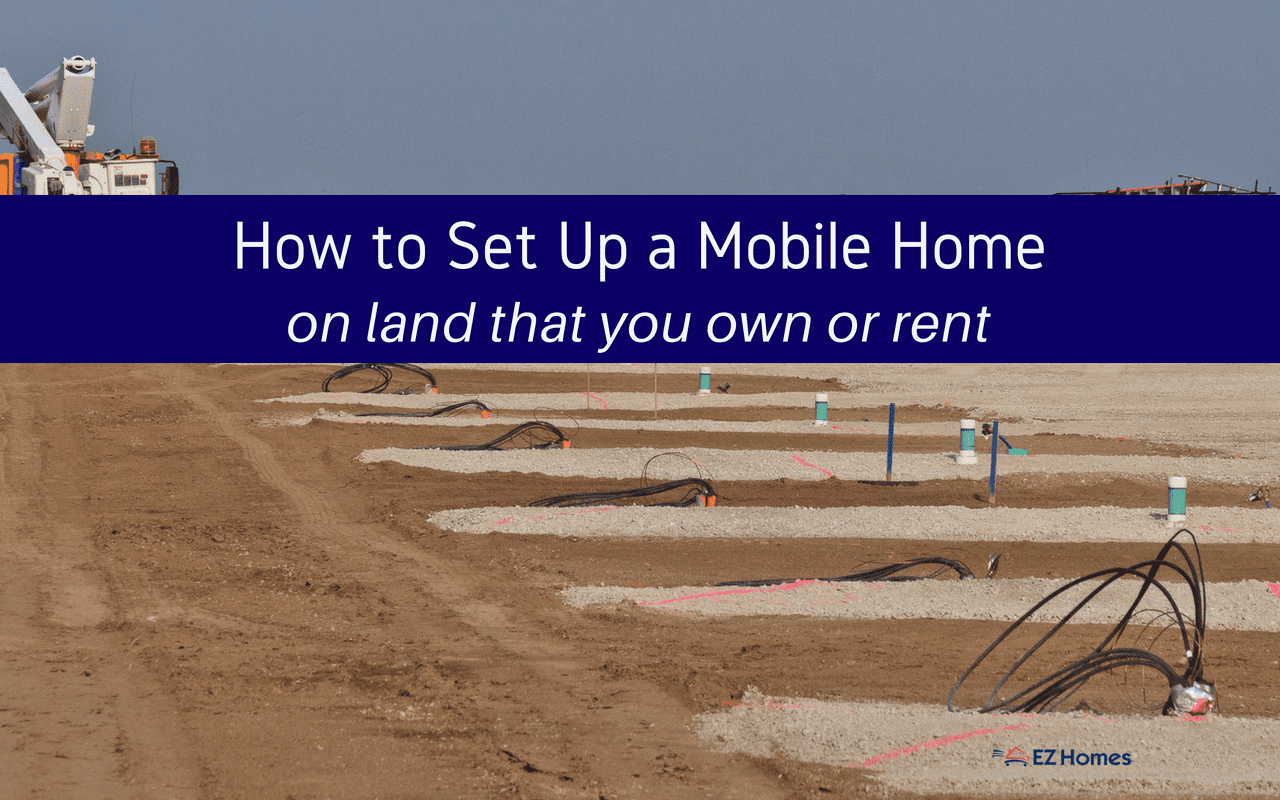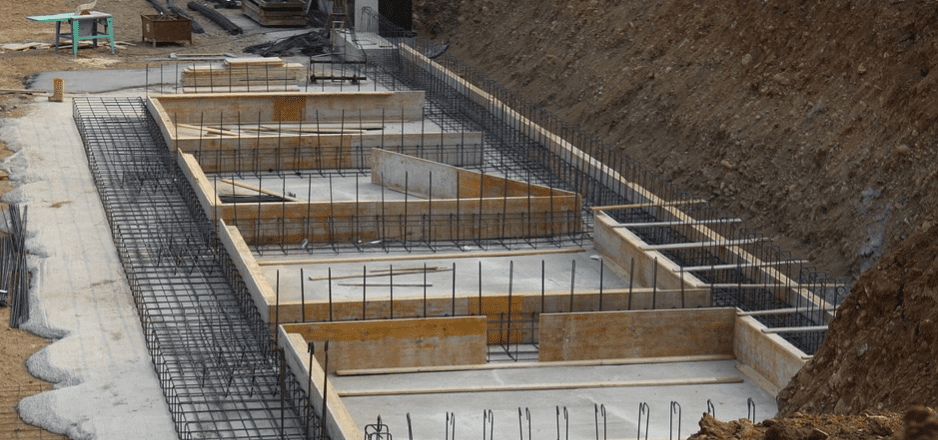Now that you’ve identified the mobile home of your dreams, it’s time to think about getting it to where moving is a reality.
In today’s article, we’re going to explore how to set up a mobile home on land. This can be land that you either own or rent.

There are a few things you’ll need to decide on so you can get your new place set up. We’re excited for you – a new place to live comes with its own adventure. But before you settle down, we’ll need to review a few things you’ll have to grapple with.
Your mobile home adventure is just beginning.
How to set up a mobile home on land that you own or rent
Setting up a mobile home on land doesn’t have to be intimidating, but it does need to be done with careful thought and planning.
A poor setup can wreak havoc on your investment. You may not see the problems of a haphazard setup now, but in the long run, you’ll see issues. A bad installation may put unwanted stress on different parts of your home, causing it to age faster and thus shorten its lifespan.
We’ll walk you through the process so you get an idea of what is to come.
There’s a manual for that and it’s important
While the HUD code will lay out some important requirements for mobile home installation, you don’t want to ditch the manufacturer’s instructions.
The mobile home manufacturer’s instructions certainly meet the requirements of the HUD code, but they go above and beyond the minimum. The manufacturer will list out state requirements that are geared towards the different nuances of your location.
Your manufacturer’s manual will serve you well with how to set up a mobile home on land.
A question of foundation
As you work with a licensed mobile home installer, you’ll need to figure out what sort of foundation you want your home to rest on.

At your disposal, you have two general types of foundations permanent and non-permanent foundations.
Permanent foundations
These foundations are best used if the home is going to sit on your own personal property or if you know you won’t be moving your mobile home again.
– Floating slab foundation
When it comes to floating slab foundations, they’re as simple as they come. It’s basically a concrete pad with re-bar embedded. Your mobile home will be anchored to this slab.
– Roll-on foundations
This type of foundation requires digging deep into the ground. Walls are poured up to ground level and the house is then placed on these walls. This is why a house on this type of foundation will seem as though it’s merely sitting right on top of the ground.
– Pit-set foundations
These foundations are dug out and poured up to two feet under ground level. Walls are poured on all four sides so that the house will sit evenly or just above ground level.
Non-permanent foundations
This foundation arrangement is best suited for mobile homes that may be moved again in the future or sit on the rented property. We’ll cover the two most popular options available to mobile homeowners.
– Surface set pad foundation
With this type of non-permanent foundation, the ground is leveled and cinder blocks are set on top. The home is then set to rest on these cinder blocks.

– Pier footing foundation system
For this non-permanent foundation, you have many concrete columns poured at various strategic locations under your mobile home. These columns will support your home.
Licensed mobile home installers
To get your mobile home installed, you’ll need a licensed professional involved. Most mobile home manufacturers will recommend one, but we suggest searching online and doing your diligence to find the right one. Make sure they’re in your state and that their license is still good.
This licensed professional will walk you through the entire process, and ensure that everything is in tip-top shape. These guys know how to set up a mobile home on land.
Regular checkup
To keep your mobile home in the best upkeep possible, we suggest having your foundations checked by a professional every one to two years. It’s easier to solve problems as they arise rather than after they’ve created more problems.
It’s normal for homes to settle and require a little tweaking.
A new adventure awaits you
Knowing the basics of what goes into how to set up a mobile home on land will help you get through the process.
For more on foundations as they apply to mobile homes, check out our rundown on the Permanent Foundations Guide for Manufactured Housing.


